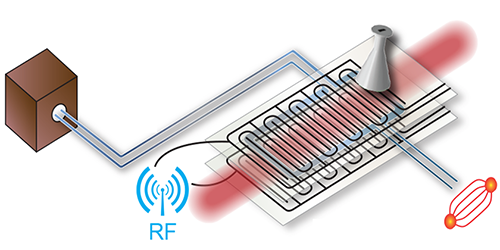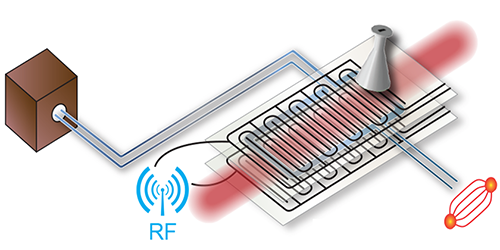Deep Freezing Molecules
Atom cooling is a mature field, and scientists hope that bringing molecules to ultracold temperatures, which is more challenging than cooling atoms, will lead to advances in precision measurement, ultracold chemistry, and quantum computing. Researchers have previously cooled molecules below indirectly, by merging two pre-cooled atomic gases into a gas of two-atom molecules. But this method only works for a limited set of molecular species. Now two teams of researchers, using different techniques, have cooled large numbers of trapped molecules down to —a temperature nearly 10 times lower than previous direct-cooling experiments.
Gerhard Rempe and Martin Zeppenfeld of the Max Planck Institute for Quantum Optics, Germany, and their colleagues used the so-called Sisyphus technique with formaldehyde molecules. In their experiment, molecules repeatedly climb the potential “hills” at the edges of an electric field trap, losing kinetic energy each time they do. The team cooled 300,000 molecules, at least 30 times the previous record from indirect cooling.
David DeMille of Yale University and his colleagues cooled strontium monofluoride in a modified magneto-optical trap (MOT). One common difficulty in cooling molecules is that they can easily make transitions to quantum states associated with rotation and vibration that are dark, that is, not accessible to the cooling lasers. The Yale team solved this problem for rotational states by rapidly oscillating the MOT’s magnetic field and also periodically reversing the polarization of the MOT laser. These synchronized oscillations periodically turn dark rotational states into accessible bright states and vice versa. Dark vibrational states were instead addressed with additional lasers, a technique the team developed previously.
This research is published in Physical Review Letters.
–David Ehrenstein





